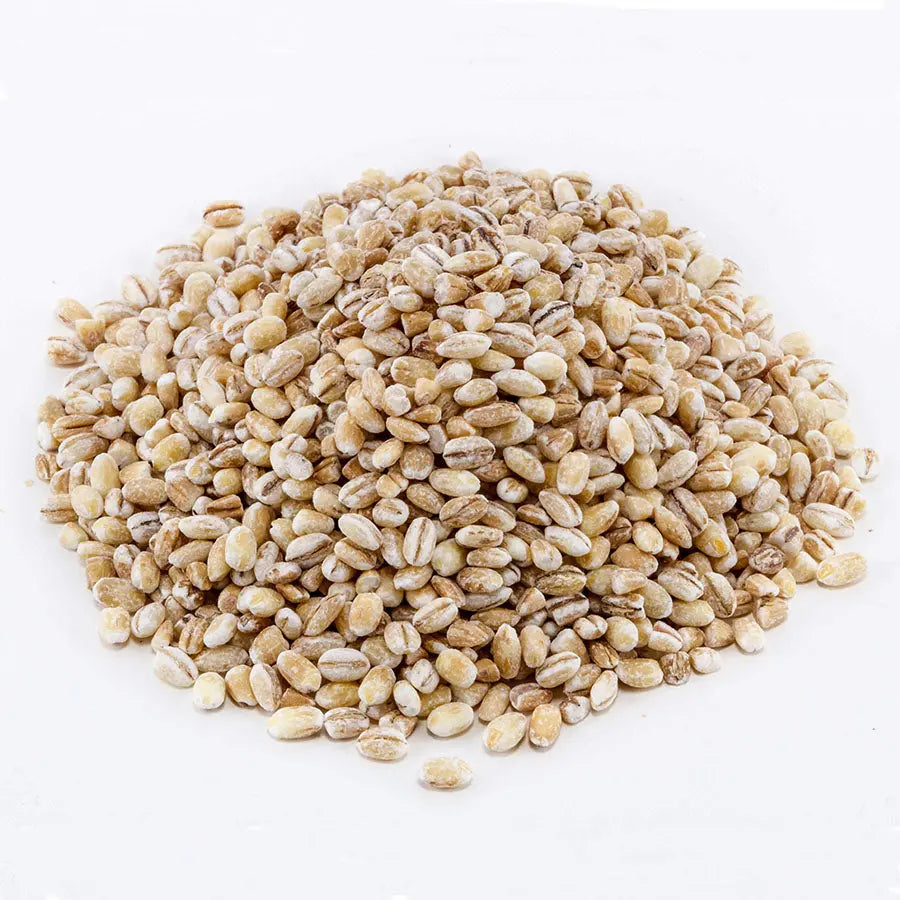Product Details
Product Details
Barley is a major cereal grain grown in temperate climates globally. It was one of the first cultivated grains, particularly in Eurasia as early as 10,000 years ago. It is used in soups and stews, and in barley bread of various cultures. Barley grains are commonly made into malt in a traditional and ancient method of preparation.
In a 100-g serving, raw barley provides 352 Calories and is a rich source (20% or more of the Daily Value, DV) of essential nutrients, including protein, dietary fiber, the B vitamins, niacin (31% DV) and vitamin B6 (20% DV), and several dietary minerals (table). Highest nutrient contents are for manganese (63% DV) and phosphorus (32% DV). Raw barley is 78% carbohydrates, 1% fat, 10% protein, and 10% water.
Hulled barley (or covered barley) is eaten after removing the inedible, fibrous, outer hull. Once removed, it is called dehulled barley (or pot barley or scotch barley). Considered a whole grain, dehulled barley still has its bran and germ, making it a nutritious and popular health food. Pearl barley (or pearled barley) is dehulled barley which has been steam processed further to remove the bran. It may be polished, a process known as "pearling". Dehulled or pearl barley may be processed into a variety of barley products, including flour, flakes similar to oatmeal, and grits.
According to Health Canada and the US Food and Drug Administration, consuming at least 3 grams per day of barley beta-glucan or 0.75 grams per serving of soluble fiber can lower levels of blood cholesterol, a risk factor for cardiovascular diseases. Eating whole-grain barley, as well as other grains with lots of fiber, improves regulation of blood sugar (i.e., reduces blood glucose response to a meal).Consuming breakfast cereals containing barley over weeks to months also improved cholesterol levels and glucose regulation.
Like wheat, rye, and their hybrids and derivatives, barley contains gluten, which makes it an unsuitable grain for consumption by people with gluten-related disorders, such as celiac disease, non-celiac gluten sensitivity and wheat allergy sufferers, among others. Nevertheless, some wheat allergy patients can tolerate barley or rye.
Allergen Information: Shares equipment with peanuts, tree nuts, wheat, milk, soy, eggs, & sesame.
Shipping & Returns
Shipping & Returns
Shipping: We process orders quickly, usually within 1-2 business days. Free standard shipping is available on orders over $79.99 with the promo code FREE79. Delivery typically takes 3-7 business days within the U.S., and you’ll get a tracking number once your order ships. Shipping fees apply to smaller orders or expedited options.
Refund & Return: Returns are accepted within 30 days for unopened, unused items. To start a return, contact our support team with your order details. Returned products must be in original condition to qualify for a refund. Some items, like opened or perishable goods, are not eligible. Refunds are processed after we receive and inspect the return.








